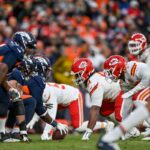For a retooled Avalanche roster chemistry is a fickle thing
“While these guys are still productive hockey players at the NHL level, there’s a certain amount that they handicap linemates like Duchene and MacKinnon with their lack of speed in transition, which was an important source of goals last year for a defensively suspect team.”
click the read more link below
The Colorado Avalanche looked like a team reborn last season.
Under first year head coach Patrick Roy, the Avs saw a resurgence that longtime fans of the franchise from back in the Quebec days might have found to be reminiscent of the first few years with Joe Sakic and Peter Forsberg.
But with success comes expectations, and Colorado has faltered in the early going of the 2014-15 campaign. Like most fans, when the dust settles on the season I expect the Avalanche to be better than they’ve shown so far, but nowhere near the results that the team was able to produce last year.
I don’t believe that this is a terrible prognosis for a team that’s still, as a collective, learning to deal with the rigors of an 82 game NHL schedule. Remember, this is still a team whose core players are mostly still under the age of 25, and under Roy, are probably being held accountable defensively for the first times in their careers.
With that said, the purpose of this post is to speculate that perhaps Colorado’s problems stem less from age and talent level and more from the mix of players currently on the team. That is, perhaps this particular mix of players is not conducive to consistent success.
On paper, particularly at forward, the Avalanche appear to have very solid depth. This has been the case at center for years, and now the Avs have made a concerted effort to surround those centers with competent wings. The result is three lines that Colorado tries to keep ‘balanced’ in order to spread out their scoring potential and a fourth line that acts like most teams’ third line.
In theory, this seems like a sound way of doing things. Keeps teams from homing in on one line and takes advantage of elite depth. In practice, there are a few problems that have plagued Colorado.
For starters, this has the build of this team has always been predicated on the necessity of splitting up some of Colorado’s best players. As Ryan O’Reilly emerged as a potential star (rather than just the role player he projected as), the Avs found themselves with a problem: arguably the team’s three most talented forwards all played the same position (Duchene, Stastny, O’Reilly). This was eventually exacerbated by the addition of Nathan MacKinnon, another center just too good to pass up in the draft. It’s why Colorado had no issue losing Stastny in free agency this past offseason. It’s also why MacKinnon, O’Reilly, and Duchene have all been tried out at wing over the past several seasons.
Unfortunately, the Avs have never really been able to fill out their top three lines with all of the talent they’d like to. The closest they ever came was at the beginning of the 2013-14 season, when they opened up to such a hot start. Then the team traded Steve Downie for Max Talbot, who filled a role but didn’t quite fit on a top line the way Downie did. Then came a big injury to Alex Tanguay, then smaller ones over the course of the season. By the end of the year, we saw Coach Roy trend more towards a ‘traditional’ roster build that stacks the top two lines. At times, both MacKinnon and O’Reilly were playing wing for Colorado.
The point is simple: there are very few teams that are actually deep enough to pull off the ‘three balanced lines’ system, and despite having the centers for it, the Avalanche lack the surrounding pieces to pull it off.
That brings us to the second problem plaguing Colorado as a result of this system: inconsistency. Even if you count last year as a success for the three balanced lines system, it’s important to remember that this has been at least a three year experiment by Colorado; perhaps even longer. The vast majority of that sample, the Avalanche were horribly inconsistent offensively, ranking 26th, 25th, and 18th in goals per game prior to last season’s breakout performance.
To try and duplicate that success, Colorado set out in the offseason to fill any holes with players of a similar talent level of last season’s team, if not the same particular talents, and with an eye to adding experience to the roster. My observation (and that is all that it is, and in a small sample size at that), is that the team compromised a little too much speed at wing in their transition.
While Jarome Iginla obviously still has a great shot and solid hockey instincts, he’s clearly not as fast as he once was. Ditto for Tanguay and Briere. While these guys are still productive hockey players at the NHL level, there’s a certain amount that they handicap linemates like Duchene and MacKinnon with their lack of speed in transition, which was an important source of goals last year for a defensively suspect team.
All of this said, chemistry is a fickle thing and the Avalanche could find a set of line combinations that works for this group. But I wonder if they might not have been better off staying the course and letting a young set of forwards grow in their experiences together, rather than recruit a group of aging mercenaries to hurry along the process.
Still, all of these moves were made with playoff results in mind. If Colorado can find a way to sneak its way in, perhaps we’ll see all of their offseason acquisitions pay off after all.





